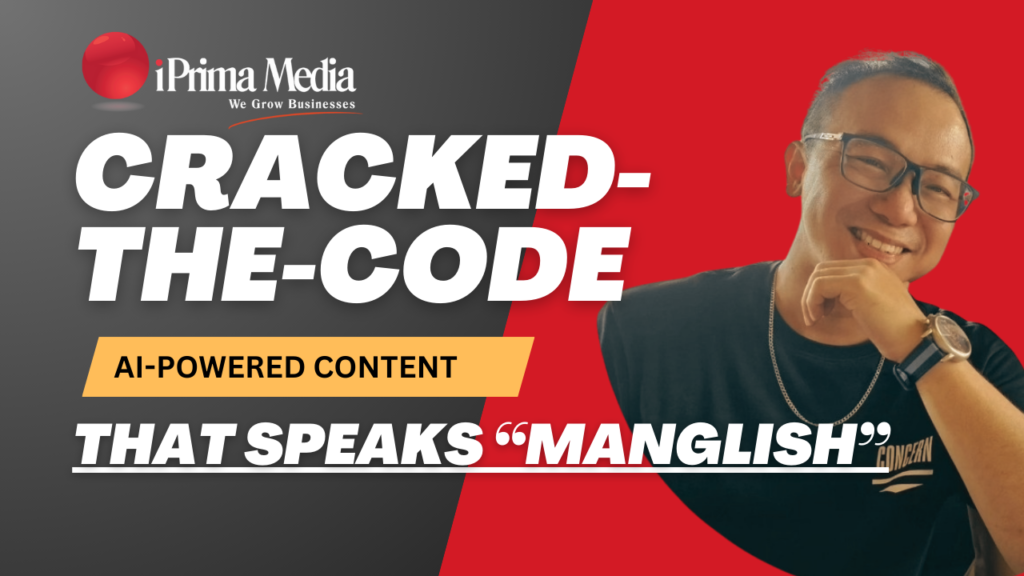The evolution of Search Engine Optimization (SEO) continues at an accelerated pace, driven by the transformative power of Generative AI. We've moved beyond the initial buzz; in 2025 and beyond, generative AI is no longer a “nice-to-have” but a core competency for Malaysian businesses aiming for sustained organic growth. This guide dives deep into the cutting-edge generative AI SEO tactics, emerging trends, and strategic hacks essential for navigating the evolving digital landscape in Malaysia. We'll explore how AI is reshaping content creation, keyword strategies, on-page optimization, and local SEO, while addressing the challenges and opportunities that lie ahead for Malaysian SMEs. Prepare to future-proof your digital strategy with the power of AI.
Generative AI has fundamentally altered how we approach search engine optimization (SEO). By harnessing the power of advanced algorithms, we can now create and optimize content in ways that were previously unimaginable.
This technology enables us to enhance the user experience and ensure that content not only adheres to SEO best practices but also resonates more effectively with the intended audience. It has opened up a new realm for us to explore innovative content strategies that align with Google's ever-evolving algorithms.

As search engines like Google get smarter, our tools also need to evolve. The integration of generative AI in our SEO toolkit allows us to craft personalized and engaging content that stands out in a crowded digital space.
With these tools, we can analyze vast amounts of data and glean insights that guide our content creation process, ensuring that the created content is not just high-quality but also SEO-friendly.
Our focus remains on striking the perfect balance between innovativeness and search engine guidelines, always keeping the user experience at the forefront. Generative AI is not just about meeting SEO metrics; it's about creating a seamless interaction between content and user, enriching their experience, and providing value that search engines recognize and reward. Through this synergy, we're empowered to consistently achieve better rankings and drive organic traffic to our sites.
The Generative AI Landscape in 2025 & Beyond: Beyond the Hype
Shifting from Basic Generation to Strategic Orchestration: AI is moving from simply generating content to orchestrating entire SEO workflows. Think AI as a strategic partner, not just a content factory.
The Rise of “AI Agents” for SEO: Briefly discuss the emerging concept of AI agents that can autonomously perform SEO tasks like keyword research, content optimization, and link building.
Hyper-Personalization: AI is enabling truly hyper-personalized content experiences based on individual user behavior and context. This is a major shift beyond simple segmentation.
Multimodal AI Dominance: Text is no longer the only game in town. AI will seamlessly integrate text, images, video, audio, and even interactive experiences to create richer, more engaging content.
Ethical AI & SEO: A significant focus on ensuring AI-generated content is accurate, original, and avoids plagiarism. Brand reputation hinges on responsible AI usage.
AI-Powered Content Creation: Content as a Dynamic Ecosystem
Beyond Articles: AI-Driven Content Ecosystems: Focus is shifting from single articles to interconnected content ecosystems. AI can help you map out comprehensive content journeys, identify content gaps, and create content clusters that address every stage of the customer journey.
Dynamic Content Adaptation: AI continuously analyzes content performance and automatically adapts it for optimal engagement and search ranking. Imagine content that morphs based on user demographics, time of day, or device.
AI-Generated Interactive Content: Focus on AI creating quizzes, polls, interactive infographics, and even personalized recommendations within content to boost engagement and dwell time.
Voice-First Content Strategies: AI is optimizing content for voice search, with a focus on conversational language and long-tail queries.
Malaysian Angle: Leveraging AI to generate content that resonates with specific Malaysian cultural nuances and regional dialects for enhanced local relevance. Consider AI-driven translation and cultural adaptation tools.
Tools: Jasper, Copy.ai, Writesonic, Scalenut, Frase, and emerging tools focused on AI-powered content ecosystems.
AI for Hyper-Intelligent Keyword Research & SEO Strategy
Predictive Keyword Modeling: AI can forecast keyword trends with far greater accuracy, allowing businesses to proactively target emerging search queries.
Intent-Based Keyword Clustering: Moving beyond simple keyword grouping to create highly nuanced clusters based on user intent, context, and purchase journey.
AI-Powered Content Gap Analysis: AI doesn't just identify keyword gaps; it analyzes the type of content competitors are creating to fill those gaps and provides actionable recommendations.
Zero-Click Search Optimization: AI-driven strategies to optimize content for featured snippets, knowledge panels, and other zero-click results.
Malaysian Context: Focusing on understanding the rapidly evolving local search landscape in Malaysia, including the influence of social media and emerging platforms. AI can analyze social conversations to identify trending topics and relevant keywords.
Tools: Semrush (AI-powered features), Ahrefs (AI-powered features), Surfer SEO, Frase, Keyword Insights, and emerging AI-powered keyword research platforms.
On-Page Optimization: AI-Driven Precision
AI-Powered Content Optimization at Scale: AI not only optimizes meta descriptions and title tags but also dynamically adjusts content elements (headings, subheadings, images) for maximum impact.
AI-Generated Schema Markup & Structured Data: AI can automatically generate and implement complex schema markup to enhance search engine understanding of content.
Personalized On-Page Experiences: AI enables dynamically adjusting on-page elements based on individual user profiles and search intent.
AI-Driven Readability Analysis & Improvement: AI assesses content readability and provides suggestions for improving clarity and engagement.
Malaysian Context: Ensuring on-page optimization considers both Bahasa Malaysia and English keyword variations and cultural relevance.
Tools: Surfer SEO, Frase, Clearscope, and specialized AI tools for schema markup generation.
Technical SEO in the AI Era: Automation & Predictive Maintenance
AI-Driven Website Health Monitoring: AI continuously monitors website performance, identifies technical issues before they impact search rankings, and suggests automated fixes.
Predictive Website Optimization: AI forecasts potential technical bottlenecks and proactively suggests optimizations to prevent performance issues.
Automated Content Indexing & Crawling: AI automates the process of content indexing and crawling, ensuring that new content is quickly discoverable by search engines.
AI-Powered Mobile Optimization: AI analyzes mobile user behavior and automatically optimizes website elements for a seamless mobile experience.
Malaysian Context: Addressing the specific technical challenges faced by Malaysian businesses, such as optimizing for varying internet speeds and mobile device usage.
Tools: Semrush, Ahrefs, Google Search Console, Screaming Frog (with AI integrations), and emerging AI-powered technical SEO platforms.
Local SEO in 2025+: Hyperlocal & Conversational
AI-Powered Local Content Generation: Create hyper-local content (news, events, guides) tailored to specific Malaysian neighborhoods and communities.
AI-Driven Reputation Management: AI monitors online reviews, identifies sentiment trends, and helps businesses proactively respond to customer feedback.
Voice Search Optimization for Local Businesses: Optimize Google Business Profiles and content for voice search queries, making it easier for local customers to find businesses.
AI for Hyperlocal Keyword Targeting: Identifying niche, hyperlocal keywords to capture the attention of nearby customers.
Malaysian Context: Leveraging AI to understand the nuances of local search behavior in Malaysia, considering factors like local languages, cultural events, and community influences.
Tools: BrightLocal, Yext, Semrush Local SEO Toolkit, and emerging AI-powered local SEO platforms.
The Future of AI & SEO: Beyond Algorithms
AI & Content Authenticity: Emerging technologies to verify content origin and prevent AI-generated misinformation.
The Rise of “AI-First” SEO Agencies: Agencies specializing in AI-powered SEO strategies.
Human-AI Collaboration: The most successful SEO strategies will involve seamless collaboration between human expertise and AI capabilities.
Ethical AI Governance: The development of industry standards and best practices for responsible AI use in SEO.
Malaysian Context: Addressing the potential impact of AI on the Malaysian job market and the need for upskilling and reskilling initiatives.
SEO In Malaysia
The future of SEO in Malaysia is undeniably intertwined with generative AI. By embracing these advancements and proactively adapting your digital strategy, Malaysian businesses can unlock unprecedented opportunities for growth and success.
Our approach involves analyzing search volume and relevance to pinpoint what our target audience is searching for.
We employ tools capable of uncovering not just popular keywords but also finding opportunities in long-tail phrases that might have less competition.
- Utilize keyword ranking tools to track your positioning on search engines and refine your keyword strategy.
- Assess search volume to determine the potential traffic gain for specific queries. High search volume indicates popularity, but also potential high competition.
It's vital to incorporate keywords that align with the user's intent behind the search query.
By focusing on user intent, we cater to the audience's needs more precisely, which search engines reward with higher rankings.
Incorporating Keywords into Content
Once we've established a robust list of keywords, the next step is content optimization.
This involves strategically placing our keywords throughout various elements of our web pages while maintaining natural readability.
- Integrate primary keywords in title tags, headers, meta descriptions, and within the first 200 words of your content.
- Use secondary keywords throughout the content body, but avoid keyword stuffing. The focus should always be on creating valuable and engaging content for your visitors.
Remember, the goal of integrating keywords is to make sure that the content serves its purpose for users first and search engines second. Balancing between SEO tasks and user engagement leads to content that ranks well and satisfies user queries.
Technical SEO and Website Optimization
In the modern landscape of SEO, maintaining a technically sound website is critical for ranking well on search engines like Google.
From the robustness of site architecture to the efficiency of mobile optimization, these factors play pivotal roles in user behavior and search engine rankings.
Site Architecture and Navigation
Our website's architecture should be structured in a way that enables users and search engine crawlers to navigate with ease.
This includes logical hierarchy and intuitive navigation, which contribute to strong information architecture.
By creating a sitemap, we provide a clear guide of our site's content, which is essential for Google's crawlers to index our pages efficiently.
- Hierarchy example:
- Home
- Category 1
- Subcategory A
- Subcategory B
- Category 2
- Subcategory C
- Category 1
- Home
Mobile Optimization and Speed
Understanding that a significant portion of users browse the internet on their smartphones, we must prioritize mobile optimization to ensure a seamless user experience.
This includes responsive design, which adapts our pages to fit various screen sizes.
Page speed is another critical factor—Google favors websites that load quickly, as speed influences user behavior and engagement.
To test and improve our site's performance, we can utilize tools like Google's PageSpeed Insights.
Enhancing User Experience

In the realm of SEO, our primary focus is to leverage generative AI for significantly improving user experience. This translates into higher engagement and conversion rates as AI tailors content to user behavior and ensures content quality, providing that personal touch that users often seek.
Optimizing for User Engagement
We prioritize user engagement by analyzing patterns in user behavior with AI tools. This allows us to:
- Predictively adjust content to match user expectations and interests, thereby enhancing user retention and reducing bounce rates.
- Personalize user interactions in real-time, creating a dynamic experience that resonates with users on an individual level.
- Employ A/B testing at scale to determine the most effective strategies for boosting engagement.
User-Centric Content Approach
Our approach to content creation is intrinsically user-centric:
- We employ AI to generate high-quality content that's not just relevant but also adds a personal touch to each user's experience.
- By focusing on the quality of content, we ensure that information is not only accurate and informative but also presented in a way that is easily digestible and resonates with our audience.
- We meticulously evaluate user feedback to continuously refine our content, ensuring it aligns with user needs and drives higher conversion rates.
Content Marketing and SEO Synergy
In the digital marketplace, the fusion of content marketing and SEO is paramount.
Our strategic approach enhances visibility and audience engagement, intertwining SEO tactics with compelling content creation.
Effective Content Strategies
We recognize the critical role of unique content creation in amplifying our online presence.
Our approach involves conducting thorough content audits to identify gaps and opportunities, ensuring our written content is not only informative but optimized for search engines.
Additionally, integrating video content appeals to visual learners and can improve dwell time, a metric positively correlated with SEO rankings.
Content Distribution Channels
Our content's reach is maximized by leveraging diverse distribution channels tailored to specific content types.
For written content, well-established platforms like blogs and article directories can enhance visibility. Meanwhile, our video content thrives on channels that support rich media, engaging audiences with dynamic visuals and sound.
Through these methods, we ensure our content is discovered and valued by our target audience.
GROW MY BUSINESS NOW
Link Building for SEO Success

In the evolving SEO landscape, link building is pivotal for increasing a site's trust and authority. We'll discuss how earning quality backlinks and optimizing internal linking structures can catalyze SEO success.
Earning Quality Backlinks
To excel in link building, it's essential to focus on the quality, not just the quantity, of backlinks.
High-quality backlinks serve as endorsements from other reputable sites, signalling to search engines that our content is valuable and trustworthy.
We strategize to create compelling, informative content that naturally attracts backlinks. This could include in-depth guides, insightful research, or interactive tools.
Moreover, we engage in authentic outreach, offering our well-crafted content as a resource that can add value to others' websites.
For effective backlink acquisition, we can also leverage industry connections and participate in digital communities relevant to our niche.
Ensuring our content is shareable and easy to link to is crucial for encouraging organic backlinks, which strengthen the overall trust of our website.
Internal Linking Structures
An often underestimated aspect of SEO is the crafting of sophisticated internal linking structures.
By strategically using internal links, we can guide visitors through our website, enhancing user experience and evenly distributing page authority.
We make sure that our cornerstone content is easily accessible through internal links, and we utilize a logical hierarchy in our site architecture to support this.
Effective internal links are not just about navigation; they're about creating a network within our website that boosts the relevance and credibility of our pages in the eyes of search engines.
It's all about finding the right balance; we neither underutilize nor overdo internal linking, keeping the structure organic and user-focused.
Local SEO and Targeting Location-Based Search
In today's digital marketplace, we understand that businesses need to have a robust presence on local search to attract nearby customers.
To achieve this, focusing on Google‘s search engine results pages (SERPs) and local business listings is critical. Let's explore how we can optimize for local SERPs and effectively manage our business listings.
Optimizing for Local SERPs
To gain visibility in local search results, businesses must prioritize their organic search strategy by ensuring location-specific keywords are embedded throughout their website. This includes:
Title Tags and Meta Descriptions: Implementing city or neighborhood names can help to increase relevance in local SERPs.
Local Content Creation: Publishing content that resonates with local audiences can boost organic visibility. An example might be a blog post on “Top Coffee Spots in [City Name]”.
Mobile Optimization: With the majority of local searches performed on mobile devices, having a mobile-friendly website is non-negotiable.
Schema Markup: Use schema.org markup to help Google understand and display local information like business hours, location, and reviews.
GROW MY BUSINESS NOW
Local Business Listings
For us to effectively capture local searches, our business listings across various platforms must be claimed, accurate, and consistent. Here's what we need to focus on:
Google My Business: It's essential to ensure that our Google My Business profile is complete and reflects up-to-date information.
Local Directories: We must maintain presence on local directories like Yelp, stating our lane to local discovery.
NAP Consistency: Our Name, Address, and Phone number (NAP) must be consistent across all platforms to reinforce our local footprint.
Customer Reviews: Actively manage and respond to customer reviews to enhance our reputation and demonstrate engagement.
Frequently Asked Questions
In addressing frequently asked questions, we cover key aspects of how generative AI integrates with SEO efforts to enhance both strategy and content.
How can generative AI be applied in SEO strategies?
Generative AI has the potential to revolutionize content creation in SEO by generating new and engaging material. These AI tools can also provide data-driven insights which can help in forming effective SEO plans.
What are the potential benefits of using generative AI for content creation in SEO?
By using generative AI, marketers can craft unique and engaging content tailored to their target audience's preferences, thus potentially improving search rankings and user engagement.
Will the use of AI in SEO significantly change search engine algorithms?
The incorporation of AI in SEO is likely to influence how search engines rank content, necessitating a different approach in optimization strategies.
How can businesses ensure AI-generated content remains SEO-friendly?
Businesses must focus on maintaining quality and relevance in their AI-generated content, ensuring it aligns with search engine guidelines for content that is helpful for users.
What are the ethical considerations of using generative AI for SEO purposes?
We need to consider transparency about the use of AI-generated content, avoiding the manipulation of search results, and ensuring content produced by AI does not mislead users or misrepresent the facts.
In what ways could generative AI influence the future landscape of SEO?
Generative AI is poised to redefine SEO. It will automate content creation and personalize user experiences. Businesses will need to adapt to these technologies to stay competitive.
You Might Be Interested In These Too!
 Autoblogging AI Review: Unveiling Performance, Pricing & MoreFebruary 10, 2024
Autoblogging AI Review: Unveiling Performance, Pricing & MoreFebruary 10, 2024 SEO for Retail Businesses: Enhance Your Website For Malaysia's LocalSeptember 2, 2024
SEO for Retail Businesses: Enhance Your Website For Malaysia's LocalSeptember 2, 2024 JB Website Specialists: Tailored Solutions for Your Online SuccessAugust 2, 2024
JB Website Specialists: Tailored Solutions for Your Online SuccessAugust 2, 2024 Rank on #1 Page Google Fast: 5 Proven SEO StrategiesFebruary 2, 2024
Rank on #1 Page Google Fast: 5 Proven SEO StrategiesFebruary 2, 2024











